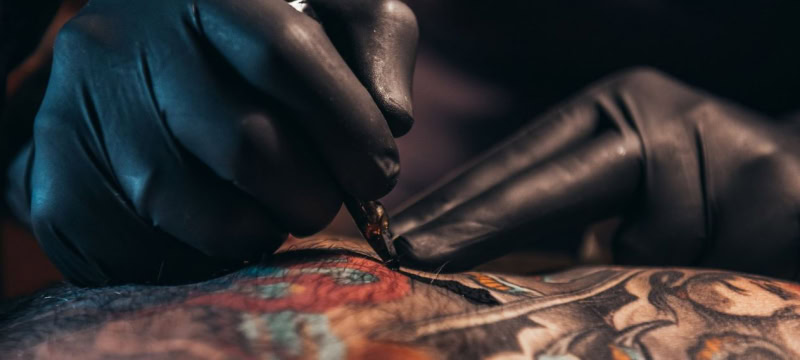New research from the US Food and Drug Administration reveals that sealed bottles of tattoo and permanent makeup ink, even those labeled as sterile, were found to contain millions of potentially harmful bacteria.
Seong-Jae (Peter) Kim, a microbiologist at the FDA’s National Center for Toxicological Research, highlighted the need for ongoing monitoring of these products to ensure their microbial safety. The findings, detailed in a July 2 report in Applied and Environmental Microbiology, stress the importance of vigilance.
Read more: Japanese High School Students Hospitalized After Eating ‘Extremely Spicy’ Chips
Contaminated ink, injected into the skin where bacteria can thrive, can lead to infections and severe health issues, according to study coauthor Linda Katz, director of the FDA’s Office of Cosmetics and Colors. Pathogens from infected ink can spread through the bloodstream and lymphatic system, potentially causing serious conditions such as endocarditis or septic shock, which can lead to multi-organ failure if untreated.
Common symptoms of tattoo ink infections include rashes at the injection site, impetigo, erysipelas, and cellulitis, all requiring medical attention. Individuals with multiple or large tattoos, or those receiving permanent makeup, are at greater risk of infection due to increased exposure to microorganisms.

According to Linda Katz, permanent makeup, especially around the eye area, may present a higher risk of infection if contaminated ink is used, as microbes can potentially enter the eye.
John Swierk, an assistant professor of chemistry at Binghamton University and an expert in tattoo ink contamination, noted that the study’s findings were expected. He pointed out that contamination is a known issue, exacerbated by the lack of a standardized sterilization method for inks. Swierk emphasized the need for uniform manufacturing practices in the industry.
In response, the tattoo industry is collaborating with regulatory agencies to meet safety standards. Selina Medina, director of research at the Alliance of Professional Tattooists, stated that manufacturers are investing in advanced sterilization techniques and quality control improvements to reduce contamination risks. This includes utilizing clean rooms and enhanced quality control measures.
Bacterial levels should be at zero
The recent study analyzed 75 samples of sealed tattoo and permanent makeup ink from 14 unnamed US manufacturers, some of which were marked as sterile. The research discovered that 26 samples from 10 manufacturers, or 35% of the total, exhibited some level of bacterial contamination.
Although most samples had bacterial counts under 250 CFUs (colony-forming units) per gram, a few had counts as high as 105 CFUs. Each CFU represents the growth of one microbe, so 10 to the power of five equals 100,000 bacteria per gram.
Previous FDA research revealed that 35% of unopened and sealed inks from US manufacturers had bacterial levels as high as 100 million CFUs per gram. According to Dr. Robert Schooley, an expert in infectious diseases, such contamination levels should ideally be zero.
He emphasized that materials injected into or contacting damaged skin should have no detectable bacteria. Schooley also noted that while the FDA study did not address viral infections, the high bacterial contamination suggests that other pathogens, including viruses and fungi, may also be present.
How to Safeguard Yourself
Many certified tattoo artists are aware of contamination risks and take precautions to prevent them, Medina noted.
“Honest communication with clients is crucial. Artists should openly discuss the measures they take to ensure ink safety and address any client concerns,” Medina stated.
“Some artists and studios test new ink batches themselves or ask suppliers for proof of testing, including microbial tests for contamination detection.”
Furthermore, tattoo artists can use an autoclave to resterilize inks before use. This device employs steam under high pressure and temperature to kill bacteria, Medina added.

How an artist handles the ink is crucial for preventing contamination, Medina noted. For instance, using the same gloves for both touching the client and handling the ink bottle poses a contamination risk. Artists should keep ink bottles tightly sealed when not in use and store them in cool, dry places away from sunlight to reduce contamination risks.
Experts advocate for stricter regulations in the tattoo and permanent ink manufacturing industry, including mandatory testing and certification before inks are sold. The Modernization of Cosmetics Regulation Act (2022) is set to bring significant changes, with full implementation expected in the coming years, focusing on improved manufacturing practices and safety standards.
Additionally, the FDA’s draft guidance released in June 2023 outlines quality control measures and sterilization requirements for manufacturers in the tattoo industry.









